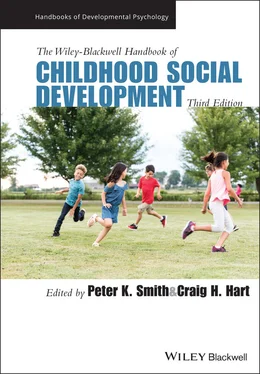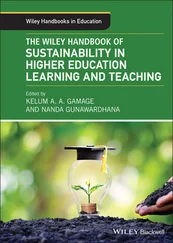American comparative linguist Michael Tomasello has made a study of the development of social cognition in both humans and apes. By comparing the abilities and proclivities of human infants and their primate relatives Tomasello has been able to bring an evolutionary perspective to bear on the development of social cooperation and moral behavior. Based on a series of tasks that allowed him and his team to study the social behavior of humans and apes, Tomasello proposed that social cognition is the main feature of human development that sets us apart from our simian relatives. More specifically, Tomasello has proposed that human children develop two important features of social cognition. These are sharing attention (both attending to the same stimulus) and sharing intention (understanding the intention of the other party in order to cooperate). Tomasello found that while human children develop the ability to share both attention and intention, apes do not develop these forms of group‐minded social cognition.
Although young infants are socially oriented, it is not until they are around a year old that they actively engage in shared attention (Myers & Bjorklund, 2020; Tomasello, 2009). At this age they begin to direct an adult’s direction to an object in order that they might share attention and begin to use adult facial expressions to help understand others’ actions. This gaze following sets the stage for shared attention and hence social learning (Myers & Bjorklund, 2020). While apes such as chimpanzees are poor at imitation (despite the common term to “ape” another’s actions), from the age of three on toddlers begin to copy the actions of adults and older children as a form of social learning.
Arguably more importantly, from this age on they begin to understand the concept of sharing and “fair‐play.” In one fascinating study, pairs of children and pairs of chimpanzees were both given the task of retrieving a reward by cooperating (each pair had to pull a separate rope to retrieve the prize such as food or marbles). Both chimpanzees and children were able to do this. The difference emerged when the prize was asymmetrically divided, that is, one of each pair gained more than the other (despite putting in equal effort). While apes were reluctant to share their uneven spoils, the children immediately balanced up the rewards equitably as the one with the greater share gave their excess to the other (Tomasello, 2019, see also Hamann et al. 2011; Warneken et al., 2011). Astonishingly, the children in this study were only around 3 years of age, suggesting that, while collaboration occurs in both apes and humans from an early age (the chimpanzees were young of various ages) equitable sharing begins very early on in human social development (but plays little or no role in chimpanzee collaborations). As Grueniesen and Wyman (2020) noted, when chimpanzees are observed hunting collectively in the wild, they behave as a group of individuals working together, rather than a group with a shared intention. Perhaps chimpanzees only understand “I,” while children understand the collective “we.”
To Tomasello it was this development of equitable sharing that gave human groups a major advantage over other primates during hominin evolution. Tomasello proposes a two‐phase model for the evolution of human social development. First, around two million YBP, due to living on an increasingly dry savannah, members of the new genus Homo became obligate foragers/scavengers. That is, according to Tomasello, prior to the development of greater cooperation, foraging and scavenging were the only options available. This increased pressure for collaborative hunting and gathering and these selective pressures led to improved collaboration. Chimpanzees today also collaborate when hunting. However, in a second phase around 200,000 YBP, competition between groups led to greater in‐group collaboration and the evolution of the concept of equitable sharing (at least within a group). This is where humans part company with the great apes. In order to collaborate equitably, the ancestors of Homo sapiens would have evolved to share attention and intention, hence this highly integrated group behavior had a knock‐on effect on the development (at an early age) of aspects of social cognition. Clearly, as with all conceptions of human evolution, there has to be an element of speculation about this model. The fact that forager societies appear to develop similar patterns of social cognition and cooperation would lend support to Tomasello’s view that the roots of social morality are ancient. In fact, there is a large body of literature on the evolution of morality and cooperation which argues cooperation was a major feature in our social evolution (for example Curry, 2016).
Where Are We Now? David Geary and David Bjorklund Formulating Evolutionary Developmental Psychology in the 21st Century
At the beginning of the 21st century, in January 2000, two developmentalists who had long sought to bring evolutionary theory into child development, David Geary and David Bjorklund, decided the time was right to produce a formal definition of the emerging interdisciplinary field of evolutionary developmental psychology. They defined it as:
the study of the genetic and ecological mechanisms that govern the development of social and cognitive competencies common to all human beings and the epigenetic (gene environment interactions) processes that adapt these competencies to local conditions.
(Geary & Bjorklund, 2000, p. 57)
Geary and Bjorklund pointed out that seemingly immature behavioral patterns should really be seen as adaptive responses designed by selection forces to increase parental investment and aid survival. An example of this is the fact that children spend so much of their time engaged in social play. This apparently pointless behavior allows for the development of appropriate social responses and a knowledge of the child’s likely later social standing (Pellegrini & Smith, 1998; Smith, 1982; and Chapter 28, this volume). Likewise, stranger and separation anxiety both lead to the child seeking protection from the caregiver at a point when they are particularly vulnerable (that is, during infancy and childhood, a period when they have become relatively mobile but are still too small to protect themselves). Interestingly, these forms of anxiety emerge at the same age not only across human cultures but also at approximately the same point in physical development in chimpanzees. Geary and Bjorklund take this as strong evidence that these forms of social anxiety have a long evolutionary history.
Building on earlier work by Geary (1995), they also suggested that child capabilities can be divided into biologically primary and secondary abilities. Biologically primary abilities evolved to deal with ancient recurrent cognitive and social challenges, whereas secondary abilities are those that are culturally determined. Hence, the primary abilities are likely to develop with ease via epigenetic processes. These include the development of spoken language and general sex differences in play behavior (for example, boys engaging more in rough‐and‐tumble play and girls more in cooperative fantasy play). Biologically secondary abilities are unnatural when seen in the light of our species EEAs. Examples of these include written language and formal mathematics. According to Geary and Bjorklund this means that, while children are motivated to acquire primary abilities (and they come relatively easily), secondary abilities are arduous and perceived as tediously repetitive.
While Geary and Bjorklund have frequently collaborated, much of their work has been conducted within their own research teams. During the last 20 years Bjorklund and his team have suggested there are three types of developmental adaptations: Ontogenetic adaptations; Deferred adaptations; and Conditional adaptations.
Читать дальше












